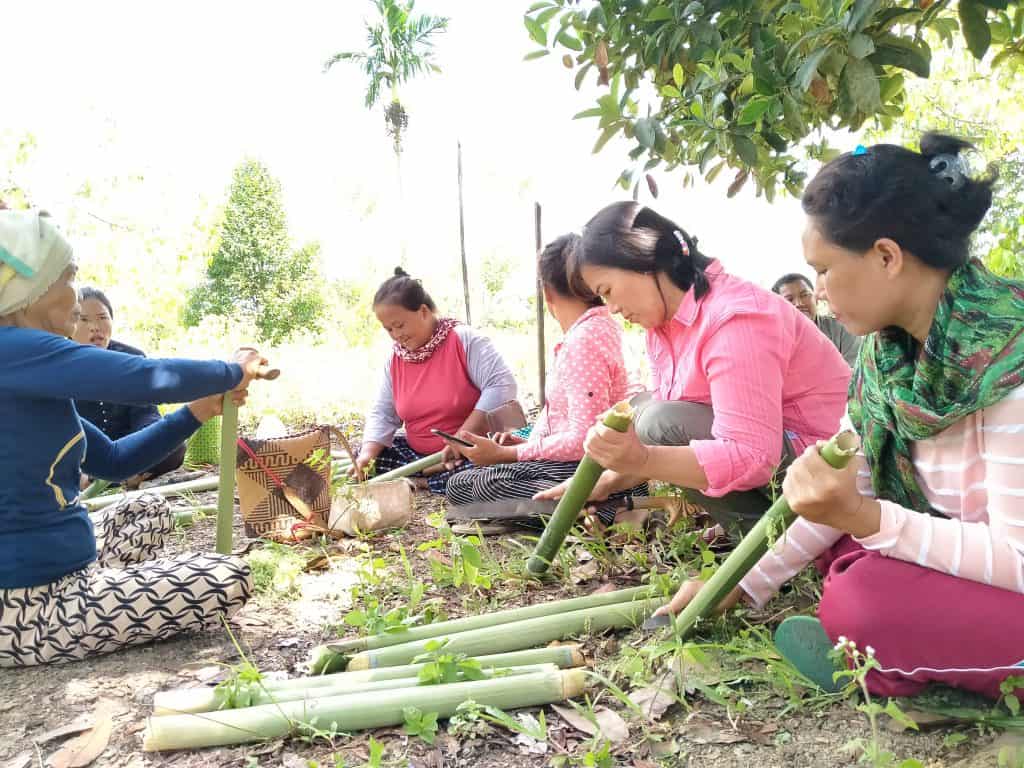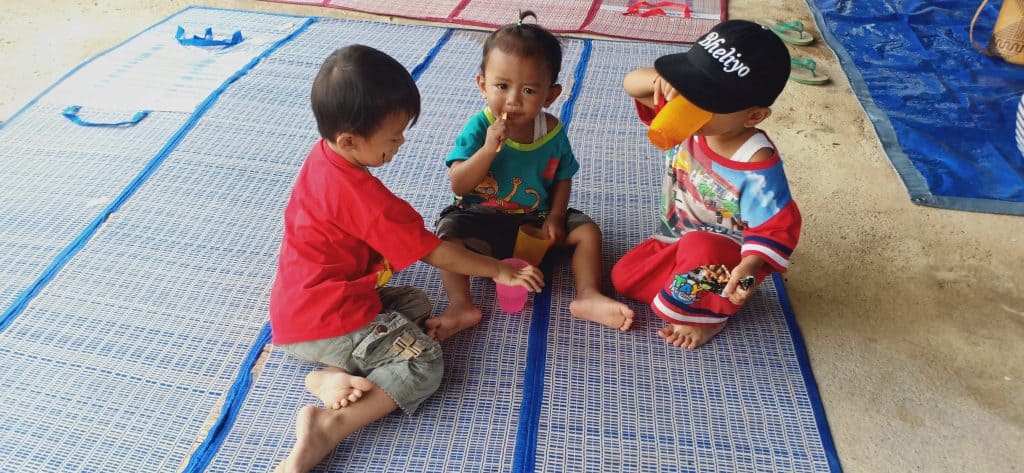As part of a project aiming at strengthening the cultural identity of indigenous people, Dayak Wehea women were invited to a handicrafts training session earlier this year. Amongst other things, they were taught to use the sustainable raw material bamboo in their traditional handicrafts.
Bags, hats, figurines, machete sheats and accessories, and traditional ceremonial accessories. Handicrafts play an important role in the culture of the indigenous Dayak Wehea tribe. Both in their daily life and as part of important traditional rituals.
Different indigenous tribes even have their own unique patterns that are weaved or carved into the traditional handicrafts.
However, the most commonly used raw material to make these crafts – rattan – has become increasingly difficult to find. This is part of the reason that local craftswomen earlier this year were invited to a training session in making handicrafts from another sustainable raw material: bamboo.
The training session was organized by Save the Orangutan and our Indonesian partner organization BOSF-RHO as part of a project supported by CISU. The goal of the project is to strengthen the cultural heritage and community of value of the Dayak Wehea people, and in this way increase their capacity to advocate for recognition of rights as indigenous people. This is eventually also a valuable way to preserve the forest.
Read: The importance of culture for the Dayak Wehea tribe

Rattan is decreasing
Handicraft products are widely used by the Dayak Wehea indigenous people for their daily activities: in farming, ceremonial and ritual events, and trading. The common methods used to produce these handicrafts are weaving (locally known as emtiem) and carving (enjeh).
Rattan, a type of climbing palm found in the rainforest, is the main raw material used for these handicrafts.
However, these days rattan is becoming increasingly difficult to source. Its limited availability means the Dayak Wehea craftswomen can only produce handicrafts at certain times of the year, usually prior to traditional events. Meanwhile, people still need handicraft products for daily use. Thus, bamboo was identified as a suitable alternative. Bamboo is easy to find in the areas surrounding the villages, but it needs to be processed before it can be utilised as a raw material.
The participants from the Dayak Wehea villages, were all women, as the local craftspeople are mostly housewives who have many years of experience in producing handicrafts.
In the session, participants learned how to process bamboo into a material ready for weaving, choose and process natural dyes, assess the quality of raw materials, and sell their handicrafts.

The training session also gave the women a chance to share their knowledge of handicrafts with each other. The Dayak Wehea tribe consists of only six villages, and knowledge of the unique patterns used only in Dayak Wehea handicrafts is fading. Since it is still an important element in the cultural identity of the tribe, it is also an important element of the project.
Learn more about how Save the Orangutan works with indigenous people
Dayak Wehea women are born multitaskers
The participants diligently involved themselves in the learning process. The atmosphere was lively – helped by the presence of accompanying children – and laughter filled the air. It was business as usual for these multitasking women, fulfilling the role of childcare provider and expert craftswomen all at once.

At the end of the session, participants were asked to write down their impressions. Everyone expressed pleasure in learning the new craft and working together.
We hope training sessions like these help local community members take pride in their identity, preserve their traditions, share their experiences, and work to create alternative, sustainable incomes.